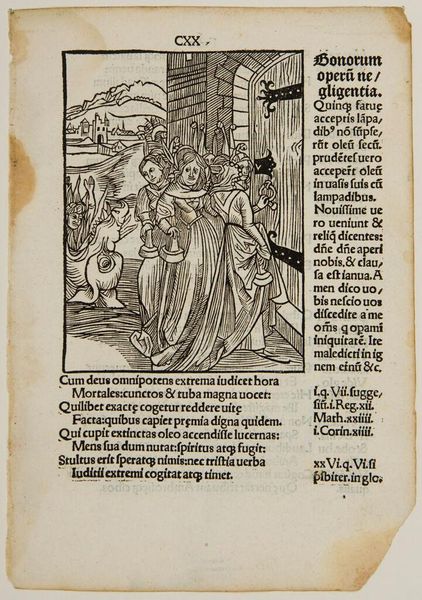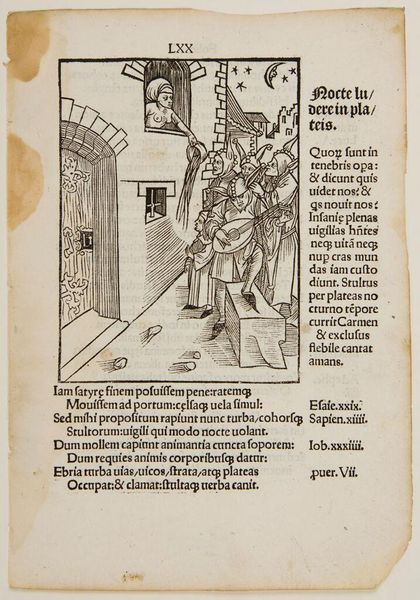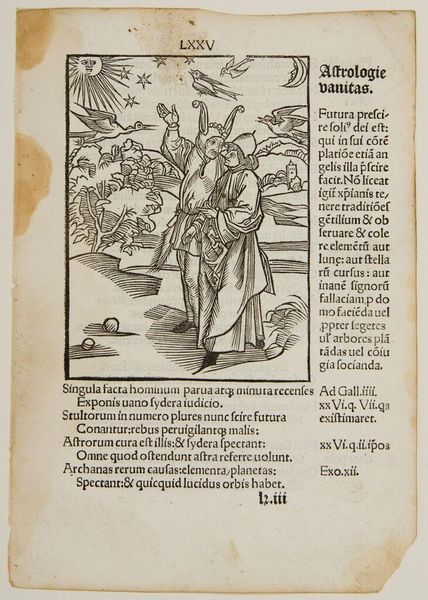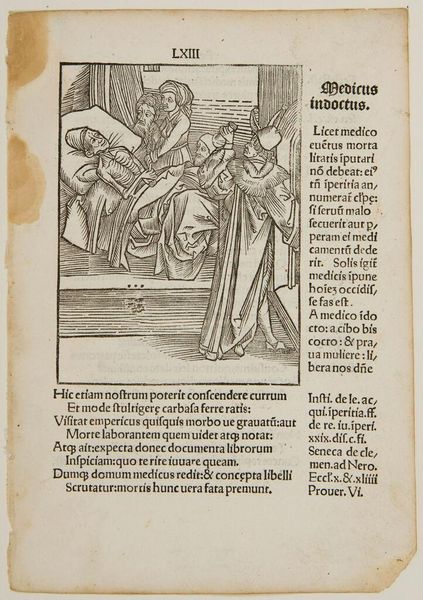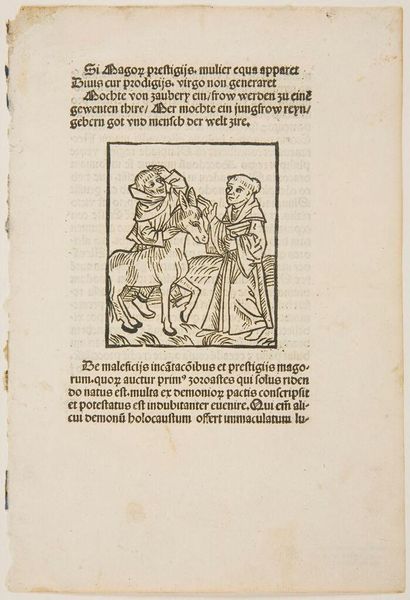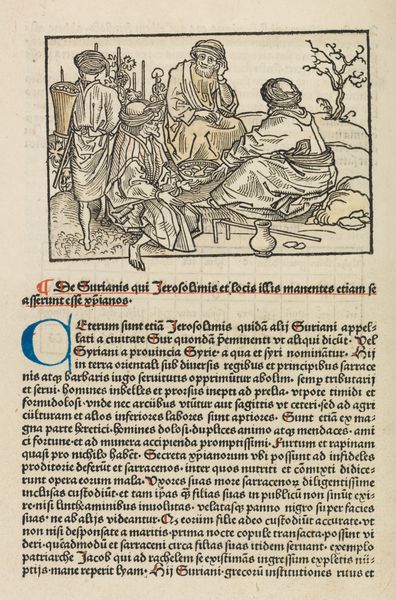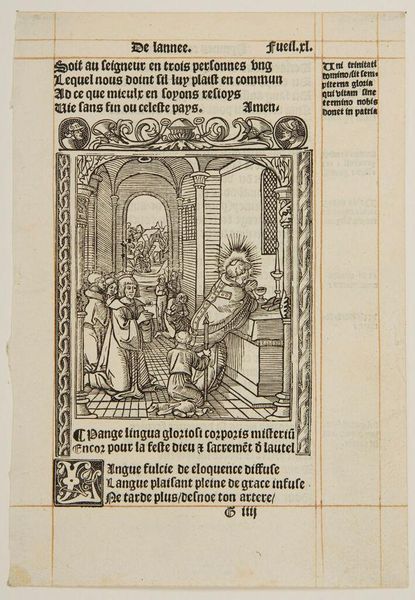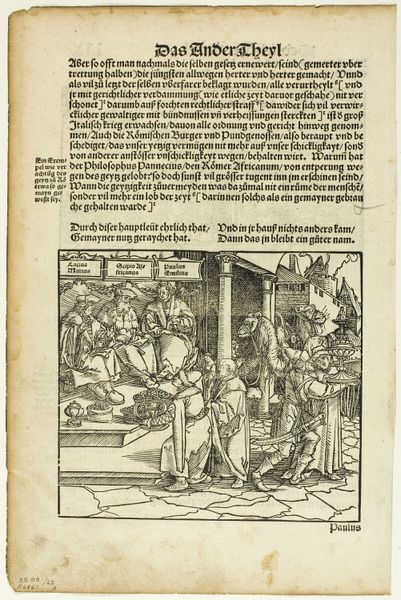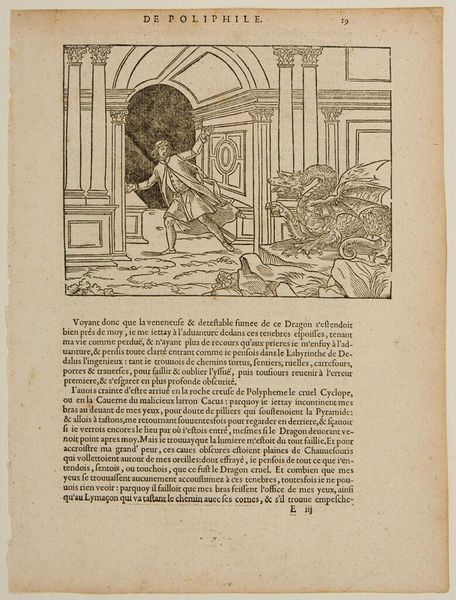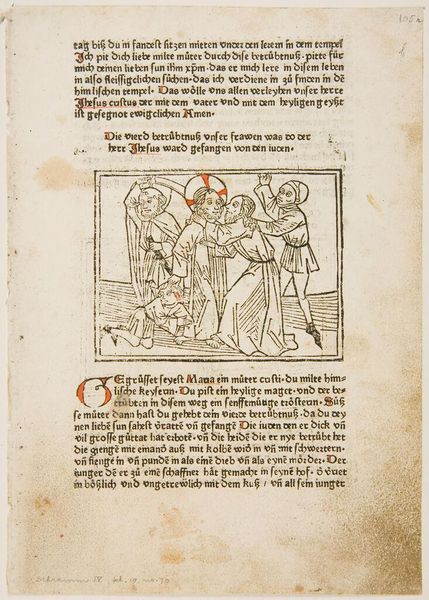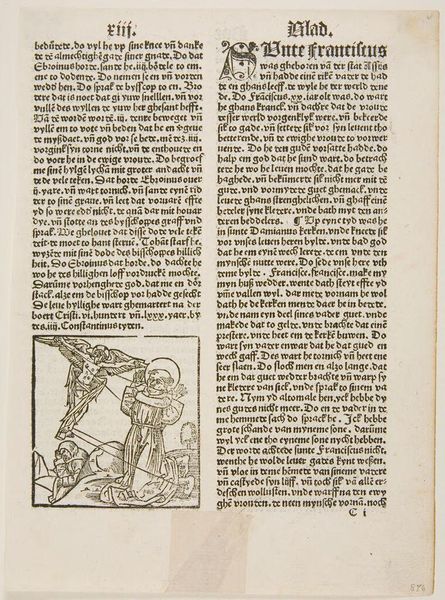
Copyright: CC0 1.0
Curator: This is an intriguing woodcut, titled "Ch. 29. Who Judges Others." It's by an anonymous artist. What's your initial impression? Editor: Well, it certainly feels like a morality play! Dark, chaotic, with these grotesque figures looming over what looks like a deathbed scene. Is that a demon whispering in someone's ear? Curator: Quite possibly! The imagery pulls heavily from the symbolic language of sin and judgment. Notice how the dying figure is surrounded by both a praying figure and these menacing creatures, representing temptation and divine retribution. Editor: It’s heavy handed, yet effective. The stark contrast of black and white in the woodcut really amplifies the sense of dread and the eternal struggle between good and evil. It is quite dramatic, don’t you think? Curator: I agree. The artist is using those stark contrasts to emphasize the text's message about hypocrisy and self-reflection before judging others. The composition keeps drawing your eye between the dying figure and the menacing figures, as if they're intrinsically linked. Editor: It’s a vivid warning, then. A stark reminder that we all face our own demons, internal and external. So perhaps before condemning someone else, we should look inward, as the text suggests. Curator: Precisely. And in doing so, perhaps find a little more compassion, a little less judgment.
Comments
No comments
Be the first to comment and join the conversation on the ultimate creative platform.
